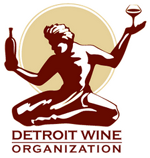News Flash – It’s really cold outside! Kind of makes you want to curl up in front of a fire with a good book and a soothing glass of red wine… or bundle up and head out the door to learn more about that glass of red wine. Our first “Wine Down” Wednesday, “Hot Reds for Chilly Nights”, is next week (tickets are still available on our Tastings Page!), with plenty of opportunities to sample reds from around the world so you’ll know what to enjoy on these nasty winter nights. Our host is Andiamo Osteria, a superb Italian restaurant with a fine selection of wines including, of course, Italian Reds. So, in preparation for your trip to Andiamo, let’s take a 10,000 foot view of Italian wines.
Italy produces more wine than any other country and has been doing so for over 3,000 years. There are over 2,000 different wine labels, 20 regions and 96 wine-producing provinces in the country. Pretty much all of Italy is covered with vines. Italian wines are generally produced to drink with food… because Italians drink wine with pretty much every meal (gotta love that!). Trying to learn about Italian wines can be intimidating because there are so many – so don’t think about it too much. As they do in Italy, just jump in and enjoy!
A few basic technical details – Italian wines can be named after a region, a grape plus a region, or a brand… so reading a label can be a bit confusing (ask one of the experts at our “Wine Down” Wednesday for advice). Like most Old World producers, Italy has a place naming (appellation) system. It’s called the DOC or DOCG, and it’s designed to ensure consistency in the style of wines sold under the famous regional names (Chianti and Barolo, for example).Some words on the Italian wine label are helpful and offer clues to the wine style. “Riserva” suggests aging in the barrel and bottle beyond the basic requirements for the appellation and may mean higher alcohol content and stricter yield. “Classico” refers to the heart and quality center of a particular region. “Classico Superiore” refers to grapes from the classico zone AND a higher alcohol content.
The most well-known wine-making regions in Italy are Piedmont, Tuscany and Veneto.
- Piedmont is famous for Dolcetto, Barbera and Nebbiolo grapes and the production of Barolo and Barberesco. (Note: The 2000 Barolos and Barberescos recently earned Wine Spectator’s first 100-Point Vintage Rating.) These wines tend to be deeply colored, rich, powerful and tannic.
- Tuscany is famous for the Sangiovese grape and the production of Chianti and “Super Tuscans”. Chianti, which is made from Sangiovese, is making a comeback after suffering from quality issues in the 1970’s (think kitschy straw-wrapped bottles used as candle holders in your local family restaurant). Super Tuscans are generally blends of Sangiovese, Cabernet Sauvignon and Cabernet Franc. Tuscany is in a moderate climate zone so Chianti and other Sangiovese blends from this region tend to have dark berry fruit flavors and vary from light to full-bodied with varieties in complexity.
- Veneto is famous for Soave and Valpolicella wines. These, too, have suffered from quality issues but some are making a comeback (Hint: look for the Classicos).
We’ll be serving a few excellent Italian selections on January 28 at Andiamo… along with other reds from around the world. It’s a great opportunity to learn more and taste more…
Tidbits to Amaze and Delight Your Friends
Italian DOC Laws govern:
- The geographical limits of each region
- The grape varieties that can be used
- The percentage of each grape used
- The maximum amount of wine that can be produced per acre
- The minimum alcohol content of the wine
- The aging requirements
Add the “G” to the acronym, i.e. DOCG, and it means the Italian Wine Board absolutely guarantees the stylistic authenticity of the wine through tasting-control boards. Seven Piedmont wines and six Tuscan wines are DOCG qualified.


Leave A Comment